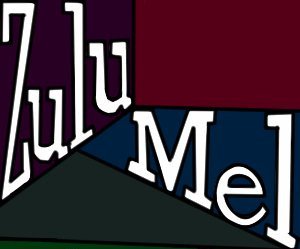Going 1:1 with iPads. Stage 4 Teacher Preparation
Going 1:1 with iPads part 4
In Parts 1, 2 and 3 we described the context and steps taken to choose a 1:1 iPad initiative at Rocky Hill School, a PK-12 day school in East Greenwich, Rhode Island. Our direction decided, it was time to prepare faculty for the coming 1:1 teaching and learning environment. The teachers knew a bit about using iPads and apps, but as I saw it we had 3 things we needed to do.
1. Get the teachers access to iPads as soon as possible.
2. Train the teachers on how to use iPads to at least a proficient level.
3. Choose the apps that would be on the iPads.
The first one was straight forward. We purchased iPads for all Middle School teachers and administrators in late February 2012 and got them into teacher hands by early March. Each teacher also got a $25 iTunes gift card to make app purchases.
The second and third steps were trickier. How do you train and support teachers who are learning a new technology during* the school year? Here’s where you should ask for what you really want from the people who can give it to you. In all of this my primary ally was the Middle School Head. Without his support, this initiative couldn’t happen. However I knew I would be asking a lot of him because the way I saw this working was for Middle School faculty meeting time to be set aside for iPad training very regularly, preferably every week from March through June. It was, as I saw it, a Professional Learning Community (PLC) tasked with learning about iPad pedagogy.
Time is the currency of change.
iPad pedagogy has several parts. One, obviously, is using the devices for teaching and learning. Another part is dealing with technical issues and varying levels of student technical comfort. In a 1:1 environment teachers need to be comfortable providing some level of tech support, or there will be an unevenness to technology use across subjects. They don’t have to know a lot, but they are on the front lines and, for example, shaping their classroom rules to incentivize students to have a fully charged battery every morning is one step they must take. It’s mundane but fundamental. Teachers must also try to actively help students who are having a wide variety of technical issues. Again, they don’t need to go deep- they just need to engage enough to show a commitment to the use of the devices. Teachers need to be comfortable enough with technology themselves to engage this way, though they don’t need to actually fix much. It’s a deceptively high bar, though, given the technology self-perceptions that some teachers cling to.
As the Technology Director with a training background, I knew that I could provide all of the training if necessary. However, that wasn’t how we wanted this PLC to work. With the Middle School Head agreeing to making iPad training an integral part of every week’s faculty meeting, I proposed that the faculty take turns doing the training. One week I would present on a topic such as moving content from one iPad app to another using the Camera Roll. The next week the history teacher would train us on how to turn a web page into a PDF that could be opened in iBooks or another PDF reader. The week after that an English teacher would be our learning leader. This again put ownership of the initiative into the teacher’s hands, allowing them to help steer it and shape it into something truly their own.
Younger people universally excel only at those technologies that are intertwined with their social lives.
This was an admittedly sneaky approach to achieving an under-articulated reality of technology integration; if your assignment requires students to use a technology tool you need to teach them how to use that tool. Many adults believe that younger people are experts with all technology. This isn’t the case. The only technologies younger people universally excel at are those that their social lives depend on. For other technologies, say, presentation software, student ability levels vary widely.
The upshot for teachers is that they need to teach the software and services their students are using. Some groups may not need much, but a couple of students in any class will benefit from direct instruction. What better way to have teachers prepare to deliver tech instruction to students, and further own this initiative, than having them deliver it to each other?
With the question of how to prepare teachers answered, only one remains: What apps should student iPads have on them? Stay tuned for part 5.
*Mired in the consideration of how professional development integrates with technology initiatives (or any initiative for that matter) is my professional conclusion that, whenever possible, PD should happen during the school day during the school year. Don’t say it won’t work, that there is no time. PD needs to be prioritized and never separated from the purchase or adoption of technology. If you want your initiative to truly flourish, make preparing for it part of the contracted day and year. This shows it the respect and gives it the priority it deserves.
